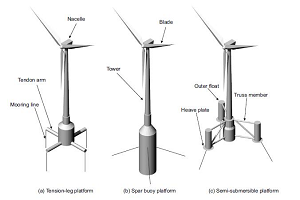
Abdulbaset Saad
University of Victoria, Canada
Title: Kriging-Bat design optimization algorithm for floating offshore wind turbine support structures
Biography
Biography: Abdulbaset Saad
Abstract
This paper presents a modified Bat design optimization approach based Kriging meta-model for determining the optimum design parameters for floating wind turbines that includes a design space spanning three stability classes of floating wind turbine support structures. In order to optimize such complex system, efficient and robust design optimization algorithm named, Kriging-Bat design optimization algorithm, where Kriging meta-model is introduced to Bat algorithm and used to search the design space for optimal designs has recently been developed for such problem. In order to provide a relatively complete exploration of the design space, a single design parameterization scheme was used to define the geometries of tension-leg, spar buoy and semi-submersible candidate designs. Evaluation of the newly proposed algorithm was carried out by comparing the obtained results that is minimizing the cost of floating wind turbines against other optimization algorithm such as Differential Evolution (DE). Optimization results for the single-body platforms indicated a dominance of tension-leg platforms in this subset of the design space. Results for multi-body platforms showed that semi-submersible platforms with four oats are more stable and cost effective than other semi-submersible designs. In general, the full exploration of the design space demonstrated that four oat semi-submersible platforms with angled taut mooring systems are a promising concept that can be used as a foundation for a detailed design process. This optimization approach has been proved to be efficient and robust in solving complex renewable energy applications and therefore suggests a promising avenue to pursue in more details.

